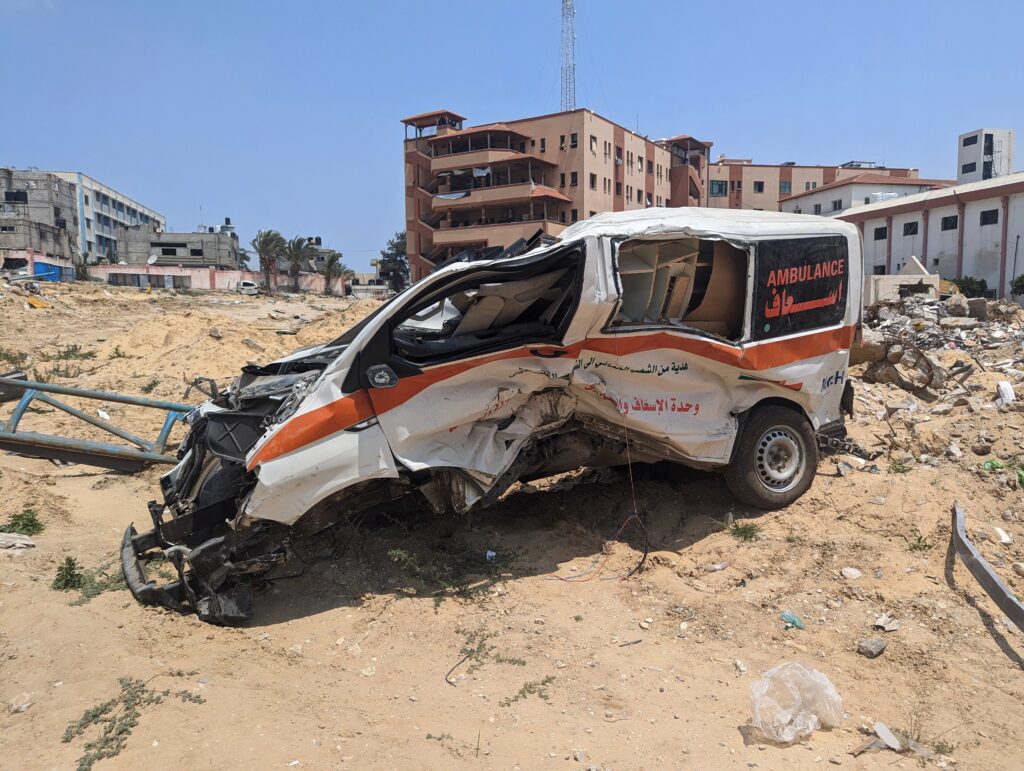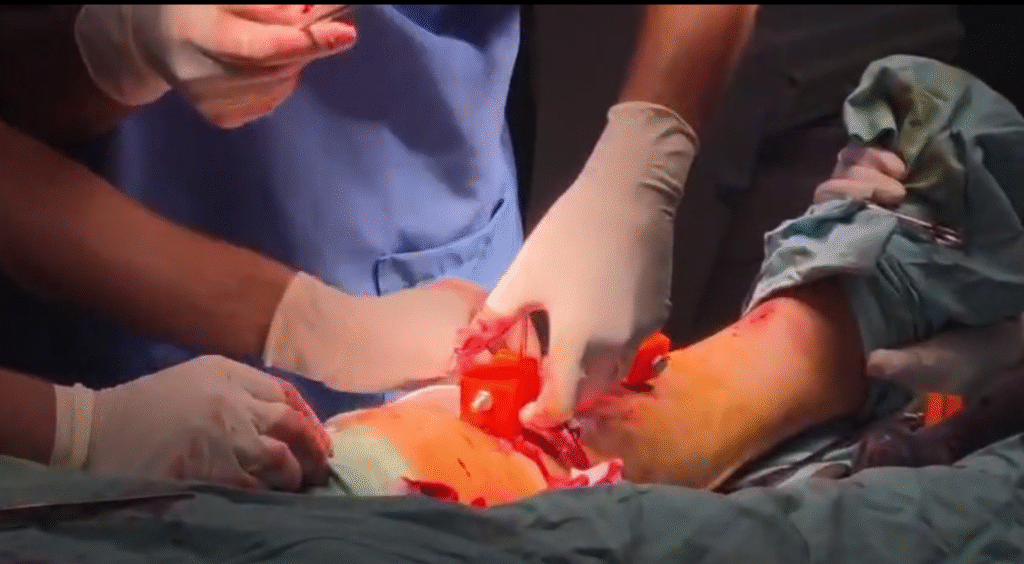
Breakdown and Repair in the Gaza Strip
This project investigates how infrastructural, organizational, and technological breakdowns in Gaza impact health care delivery and the repair of medical devices in public hospitals and clinics. Initially funded by a 2023 New Frontiers in Research Fund – Exploration grant, the project aimed to inventory and assess Gaza’s medical equipment, develop processes for repair and triage, and strengthen local capacity through training and onsite production of replacement parts.
Gaza’s health care workers have rewritten the rules of disaster medicine, forging new forms of ingenuity, solidarity, and care under impossible conditions.
Led by Dr. Alissa Centivany, Starling Co-Director, in collaboration with Dr. Tarek Loubani, medical director of Glia, a medical solidarity organization based in London, Ontario, with a branch operating in Gaza since 2012, the project has shifted toward a material culture approach — looking not only at breakdown and repair, but also at ingenuity and innovation under siege. The devastation in Gaza has been profound: only 3 of 36 hospitals remain partially functional, over 2 million people have been forcibly displaced (primarily to the south of the Strip), and a total military blockade has prevented the entry of essential medical supplies. Health care workers, already resource-strapped, are forced to innovate under constant emergency conditions, rewriting the rules of disaster medicine in real time.

Starling Research Coordinator and Glia’s Director of Development, Dr. Dorotea Gucciardo, has contributed to this work through two rotations to Gaza as an embedded observer of the health care system, providing unique first-hand insights into how medical professionals navigate collapse and blockade. Building on these observations, the project has taken on new dimensions, examining not only the dysfunction of humanitarian aid systems but also the emergence of innovation and solidarity under siege. From improvised surgical techniques to the local production of life-saving devices like the external fixator, Gaza’s health care workers exemplify techno-science in action, developing practices and tools that push the very limits of what medicine under blockade can look like.
By studying this material culture of health care during genocide, the project foregrounds the ways in which Palestinian health care workers are not simply adapting but creating new paradigms of medical practice. Their ingenuity and resilience are globally relevant, offering vital insights into how health care systems can respond to crises when infrastructures collapse.
Relevant Links:
Centivany, A. (2024), “Infrastructure Development and Donation Culture in the Gaza Strip”.
Centivany, A. (2024), “‘You are Not Here’: Coordinating Repair under Occupation”.
Centivany, A. (2024), “When all else fails? Exploring hope in times of profound crisis”, presented at the Joint Conference of the European Association for the Study of Science and Technology and the Society for Social Studies of Science, Amsterdam, the Netherlands, July 2024.
Gucciardo, D. (2025), “Medicine Under Siege: Technoscience, Humanitarianism, and Healthcare in Gaza,” presented at the Society for Social Studies of Science, Seattle, United States, September 2025.
Gucciardo, D. (2025), “Technological Solidarity under Siege: Cross-Border Manufacturing and Resilience in Gaza’s Healthcare Sector,” presented at the Canadian Science and Technology Historical Association, Toronto, Canada, November 2025.
Smith, J., el-Solh, S., Gucciardo, D., et al. (2025). Realising health justice in Palestine: beyond humanitarian voices. Conflict and Health, 19, 7. https://doi.org/10.1186/s13031-024-00634-0
